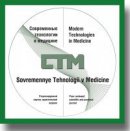
Immunological Criteria for Predicting Severe and Complicated Forms of Chickenpox
The aim of the study was to evaluate the levels of mediators of the immune response, cellular immunity, and phagocytic activity in patients with chickenpox with various values of the clinical and laboratory parameters and propose criteria for predicting the severity and complications of the disease.
Materials and Methods. The blood levels of pro-inflammatory mediators were evaluated by ELISA using monoclonal antibodies (Protein Contour, Russia).
Results. The inflammatory mediators and neutrophil chemiluminescence were studied in patients with either presence or absence of Varicella zoster DNA. We found that in patients with positive viral DNA, the levels of IFN-α and IFN-γ were significantly lower compared to patients with negative DNA results. Thus, complications of chickenpox, in particular secondary viral-bacterial pneumonia, can be predicted based on low (less than double-normal) levels of IL-6 and IFN-γ, induced chemiluminescence, CD16, and CD20. This type of immune response indicates the state of immune deficiency with prevailing suppression of the T-effector and phagocytic mechanisms in these patients.
Conclusion. Prognosis of the development of severe and complicated forms of chickenpox can be based on the insufficiently increased (less than two normal values) levels of IL-6 and IFN-γ, induced chemiluminescence, CD16, and CD20. These relatively low levels are indicative of reduced immune response to the infection, which may require additional immune correcting therapy.
- Kawai K., Gebremeskel B.G., Acosta C.J. Systematic review of incidence and complications of herpes zoster: towards a global perspective. BMJ Open 2014; 4(6): e004833, https://doi.org/10.1136/bmjopen-2014-004833.
- Vashura L.V., Savenkova M.S., Zavadenko N.N., Koltunov I.E., Carazhas N.V., Rybalkina T.N., Kalugina M.Y., Bullih A.V. Convulsive disorder in children: the role of herpes virus infections. Detskie infekcii 2014; 13(2): 48–52.
- Wakim L.M., Woodward-Davis A., Bevan M.J. Memory T cells persisting within the brain after local infection show functional to their tissue of residence. Proc Nat Acad Sci U S A 2010; 107(42): 17872–17879, https://doi.org/10.1073/pnas.1010201107.
- Okunuki Y., Sakai J., Kezuka T., Goto H. A case of herpes zoster uveitis with severe hyphema. BMC Ophthalmology 2014; 14: 74, https://doi.org/10.1186/1471-2415-14-74.
- Paludan S.R., Bowie A.G., Horan K.A., Fitzgerald K.A. Recognition of herpesviruses by the innate immune system. Nat Rev Immunol 2011; 11(2): 143–154, https://doi.org/10.1038/nri2937.
- Papaloukas O., Giannouli G., Papaevangelou V. Successes and challenges in varicella vaccine. Ther Adv Vaccines 2014; 2(2): 39–55, https://doi.org/10.1177/2051013613515621.
- Simonova E.V., Kharlamova F.S., Uchaikin V.F., Drozdova I.M., Semenova L.P., Andzhel A.E. Limbic encephalitis of herpesvirus etiology. Detskie infekcii 2014; 13(4): 6–13.
- Nielsen O.H., Ainsworth M.A. Tumor necrosis factor inhibitors for inflammatory bowel disease. New Engl J Med 2013; 369(8): 754–762, https://doi.org/10.1056/NEJMct1209614.
- Winsauer C., Kruglov A.A., Chashchina A.A., Drutskaya M.S., Nedospasov S.A. Cellular sources of pathogenic and protective TNF and experimental strategies based on utilization of TNF humanized mice. Cytokine Growth Factor Rev 2014; 25(2): 115–123, https://doi.org/10.1016/j.cytogfr.2013.12.005.
- Levina A.S., Babachenko I.V. Persistent infection in frequent and prolonged ill children, possibilities of etiopathogenetic therapy. Detskie infekcii 2014; 13(4): 41–45.
- Yakubenko A.L., Yakovlev A.A., Musatov V.B., Kingo Z.N., Gorbova I.V., Andreeva I.L., Komarova A.Y. The dynamics of interleukin-6 level in HIV-infected patients with herpes zoster. Zhurnal infektologii 2015; 7(2): 83–91.










